Golf: stop early extension- No more goat hump!
What is early extension?
Stopping early extension in the golf swing is paramount to hitting the ball better. This swing fault plagues millions of golfers worldwide. Basically, picture an imaginary line on your backside when you address the ball. Then as you make your ill-fated downswing, your posterior comes off that line. When this happens, your torso in turn, moves away from the ball. Thanks to this “move” a myriad of poor shots will soon follow. Heel shots, mishits, topping it, skulls, “hosel rockets” (aka shanks) and any number of undesirable results. Along with extreme inconsistency. This is early extension. As you’ll see me regrettably demonstrate below:
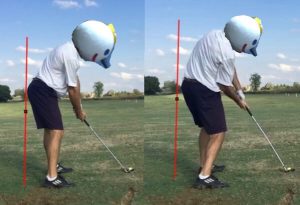
There are many descriptions of this malady. Some more “PC” than others. Here’s a list of some of the better-known terms for this swing fault:
- Loss of tush line
- Loss of/not maintaining spine angle
- posterior pelvic tilt
- “goat hump”
Call it whatever you like, but I know from extensive experience that it’s not something we want.
Why does it happen?
Why is the earth round? Why is bacon so good? (’cause it’s bad for you?) Where’s Hoffa buried? Enigmas, mysteries. Now teaching pros can give you all sorts of reasons for loss of tush line. “You’re losing your spine angle, you didn’t rotate properly, you didn’t shift your weight, you stood up through it…..blah blah …..” My explanation is a bit different. We’re trying to propel a small round object, sometimes great distances, with basically a crooked stick. The natural inclination is to just “hit the ball”. In doing what comes naturally, that gets us off that sacred imaginary line. We are sliding forward in the downswing instead of rotating. The task of “trying to hit” leads to this result. That’s my idea of it, in the plainest of language I can write.
Failed efforts

There are hundreds, if not thousands of instructional tips and videos attempting to address this. Some of them are terrific explanations. Anyone that has tried to fix this problem has no doubt used the “set up a chair on your tush line” drill. While it does give an idea of where the derriere should be throughout the swing, for me it never fixed the issue. Whenever I tried to add speed to the swing, off the line I’d come. I went so far as to build from scratch a device that would keep my head in place. Thousands of swings later on my device, still the same goat hump.
The answer
Rotation. Rotation is king. Along with a technical term, anterior pelvic tilt(APT).
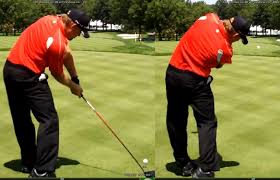
Also to be added is right lateral bend(RLB). If you have no RLB you will not reach the ball. The best players throughout history had these things. Along with the sacrum moving away from the target. What?? That’s what I said when I first heard these things. Basically, your body can be in one of two positions at impact, anterior or posterior pelvic tilt(PPT). Anterior is what we’re after.
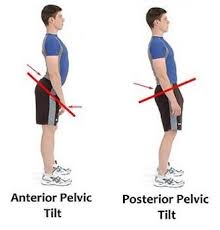
It’s the little arch in your back. In my years of flailing at the ball, I’d have severe PPT instead of APT. Not good. What about the sacrum? Well, in spite of all I was ever taught in the past, it should move away from 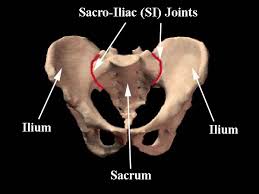 the target throughout your downswing. “Shift your weight”- not sure how many times I was told this. Thousands. And to an extent, its true. But it’s not the entire truth. You do need to get your weight to your left side (right handed golfer). But it can be done without a “shift”. It’s a planting of the lead heel with the sacrum moving away. Rotation. The best ballstrikers in history have had this move in common.
the target throughout your downswing. “Shift your weight”- not sure how many times I was told this. Thousands. And to an extent, its true. But it’s not the entire truth. You do need to get your weight to your left side (right handed golfer). But it can be done without a “shift”. It’s a planting of the lead heel with the sacrum moving away. Rotation. The best ballstrikers in history have had this move in common.
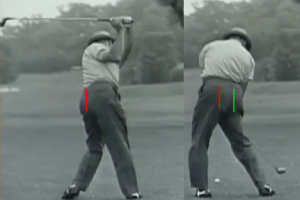
In the photo above, you can clearly see this movement being performed by none other than Sam Snead. 82 PGA tour victories. 7 Majors. Often considered the best swinger of the club in the history of the game. I’ll never hit it like him. Not that good of an athlete, nor do I have his flexibility. But at least I know what he was doing, and it is a move I can try to copy. 20+ years of golf lessons, and I’d never even heard of this.
Andre Van Staden, respected teaching pro out of New Zealand, gives us an example of APT/PPT:
Shifting or Sliding?
So why is sliding bad? We naturally want to get our weight to the left (right handed golfer) when trying to hit the ball. It helps us in generating more swing speed. But it’s a slippery slope. Excessive slide will inhibit rotation. That’s never good. It will cause us to stall out and lose our tush line. Compounding those problems (as if they weren’t enough!), we’ll “flip” at the ball.
Here’s Kelvin again, discussing weight shift:
Conclusion
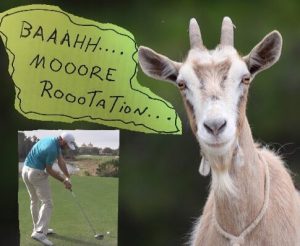 This is not for the faint of heart. Serious effort will be required to make this type of change. My journey is still ongoing, but I’ve made great strides to implementing these moves. The old cliche applies here – if it were easy everybody would be doing it. But it’s definitely worth it. More consistency and more authoritative golf shots? Yes I’ll take a heaping helping of both, please. The thing is, I’ve tried everything else. Nothing worked before. Better understanding of anatomy and how it should work in the golf swing has aided me on this journey. Hopefully, these ideas will resonate and help you to “stop the hump”! As always, thoughts and comments are welcomed. In no way have I covered all the bases here, just sketched some broad strokes. Ideally I’ve provided with you of a better understanding of what early extension is and how you can correct it. If you’d like to really delve deep into this topic, visit my friend Kelvin Miyahira.
This is not for the faint of heart. Serious effort will be required to make this type of change. My journey is still ongoing, but I’ve made great strides to implementing these moves. The old cliche applies here – if it were easy everybody would be doing it. But it’s definitely worth it. More consistency and more authoritative golf shots? Yes I’ll take a heaping helping of both, please. The thing is, I’ve tried everything else. Nothing worked before. Better understanding of anatomy and how it should work in the golf swing has aided me on this journey. Hopefully, these ideas will resonate and help you to “stop the hump”! As always, thoughts and comments are welcomed. In no way have I covered all the bases here, just sketched some broad strokes. Ideally I’ve provided with you of a better understanding of what early extension is and how you can correct it. If you’d like to really delve deep into this topic, visit my friend Kelvin Miyahira.
10 thoughts on “Golf: stop early extension- No more goat hump!”
Way too much technique involved! one of the many reasons the game is so challenging. But that also makes it that much more rewarding. thanks for your comment and reading 🙂
This is a great article, very informative. I never really thought about all the technique that goes into golf. Now this is something I’ll have to pay attention to and be more aware when I see it being played!
you bet!
Ok. Thanks again. Keep doing what you are doing here. Hopefully we meet up on one of the lovely golf courses of the world.
haha yes we’ve all fallen prey to the beloved 19th hole 🙂 certainly agree that these changes can be difficult to make, but they are not impossible. “that perfect swing”- don’t think I’ll ever get there! and yes, poor Ernie. He handled it like a gentleman though, and continued to put great effort into the tournament-certainly a good role model. thanks so much for your comments
Very informative article and written in a very amusing style. I am going to be chuckling about goat hump when I watch the Open now. I did play whilst at University but haven’t done so for many years though I still watch a lot of the majors. Sometimes I feel that I should take it back up as it’s a great way to spend a weekend and honestly it is good for you (apart from the 19th tee).
It is difficult though to make the minute changes often required for “that perfect swing” or even the perfect putt (Ernie Els would probably agree with that at the moment after the Masters), so your info is very useful.
thanks Jason. trying to keep things “light” here, but at the same time I want all golfers to improve. If they’re getting better, they’ll want to play more and hopefully get friends and family involved as well. I used to play a ton, but some recent surgery has curtailed my game. I’ll be back in no time hopefully. I did a review on Pinehurst, it’s probably one of the most spectacular places I’ve ever played. Also got to play in the Fla/Ms gulf area. Beautiful courses there as well. would love to someday play Kiawah and Sea Island- they look awesome! Until next time, thanks for the comments.
I think you have done a great job with this article explaining to me how to stop early extensions.
I am exploring the world of golf more and more so I need to get as much knowledge as possible to allow me to be on top of the game.
Do you get to play golf often and where are some of the best golf courses that you have played?
I have been to the Kiawah and also to the Sea Island Golf Courses – quite spectacular!
Thanks again for sharing and talk to you soon.
haha well I’m not so sure about winning the battle, but I am fighting the good fight. You’re right, it is very difficult. Just wanted to tell people that it is possible though, and to hopefully shed a little light on the subject. thanks for your comment!
It is amazing just how technical the game of golf really is, I mean, when you look at it, it seems as though you are just hiting a little white ball about.
It can be amazingly hard to make the kind of change you are talking about in this post, You really need to have a full awareness of your body and how it is moving throughout the entire swing. It is hard enough to concentrate on just making sure the club head hits the ball, much less adding in all this other body awareness stuff. If you are winning the battle then you are a better than I, Gunga Din! (sorry for the dated quote, just seemed the most fitting).